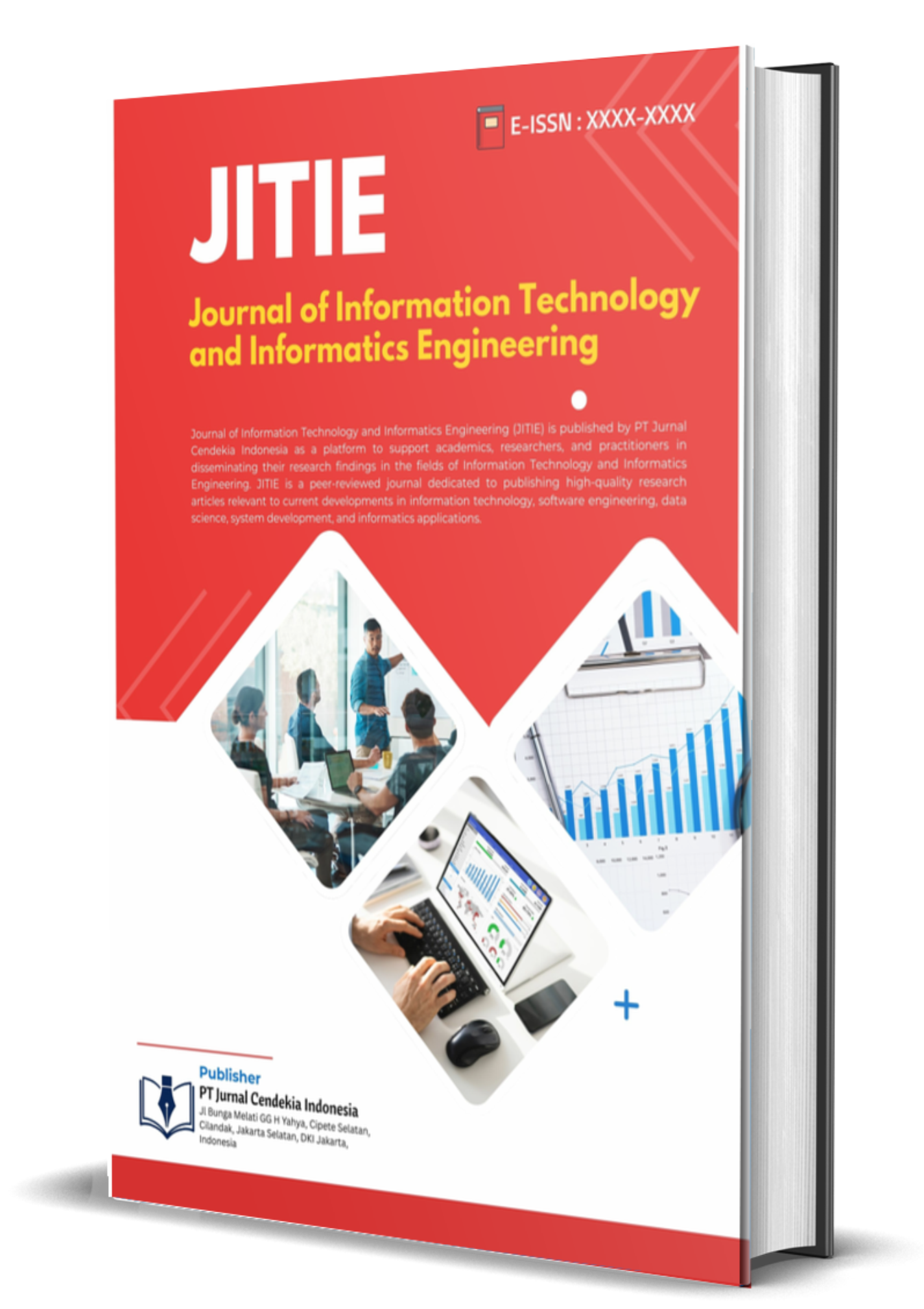Student Clustering Based on Academic Performance Using the K-Means Algorithm in RapidMiner: A Case Study with the Student Academic Performance Dataset
Keywords:
K-Means, clustering, RapidMiner, data miningAbstract
One of the primary indicators used to convey the effectiveness of the learning process and to create more efficient teaching methods is student academic performance. This study uses the RapidMiner application to use the K-Means Clustering method in order to group students according to their academic performance. The synthetic data, which includes details about student involvement, attendance rates, and academic grades, is taken from the Kaggle platform. This study was carried out in a number of steps, including cluster quality assessment, attribute selection, algorithm application, and data pre-processing.Based on the results, three student groups with characteristics of high, medium, and low academic performance were examined. The Davies-Bouldin Index examination indicated that the clustering results were optimal. These findings are expected to serve as a guide for educational institutions to develop more appropriate and successful teaching strategies.
References
Daniel, D. T. (2023). Pengelompokan penerimaan mahasiswa baru dengan algoritma K-Means untuk meningkatkan potensi pemasaran. Bulletin of Information Technology (BIT), 4(3), 294–298.
Han, J., & Pei, J. (2022). Data mining: Concepts and techniques (4th ed.). Morgan Kaufmann.
Bawono, R. (2020). Perlindungan data pribadi di era digital. Jurnal Ilmiah Komputer dan Informatika (JIKI), 5(1), 22–29.
Bayu, D., & Aditya, H. (2022). Edukasi penggunaan internet aman untuk remaja. Jurnal Abdimas Teknologi, 6(2), 110–117.
Kaur, H., & Verma, P. (2021). Performance analysis of K-means clustering algorithm with different distance metrics. International Journal of Scientific & Technology Research, 10(2), 164–169.
Linoff, G. S., & Berry, M. J. A. (2022). Data mining techniques: For marketing, sales, and customer relationship management (3rd ed.). Wiley.
Purnama, Y. W., & Marito, W. (2023). Penerapan algoritma K-Means untuk pengelompokan data akademik mahasiswa. Jurnal Teknologi Informasi dan Pendidikan, 16(1), 45–52.
Safnita, F., & Dewi, R. (2024). Penerapan algoritma K-Means dalam pengklasteran hasil evaluasi akademik mahasiswa. Kesatria: Jurnal Penerapan Sistem Informasi (Komputer dan Manajemen), 5(2), 513–520.
Suraya, S., & Sari, R. (2023). Penerapan metode clustering dengan algoritma K-Means pada pengelompokan indeks prestasi akademik mahasiswa. SKANIKA: Sistem Komputer dan Teknik Informatika, 6(1), 51–60.
Susetyo, A., & Nugraha, A. (2022). Analisis pengelompokan data menggunakan algoritma K-Means dalam sistem informasi akademik. Jurnal Ilmu Komputer dan Aplikasi, 8(2), 78–84.
Wahap, A. L., & Putra, A. P. (2024). Implementasi algoritma K-Means clustering pendeteksian dini performa siswa pada pembelajaran Bahasa Indonesia. Prosiding Seminar Nasional SATI, 3(1), 581–592.
Rahmadini, R., Lubis, E. E. L., Priansyah, A., RWN, Y., & Meutia, T. (2023). Penerapan data mining untuk memprediksi harga bahan pangan di Indonesia menggunakan algoritma K-Nearest Neighbor. Jurnal Mahasiswa Akuntansi Samudra, 4(4), 223–235.
Sudarsono, B. G., Leo, M. I., Santoso, A., & Hendrawan, F. (2021). Analisis data mining data Netflix menggunakan aplikasi RapidMiner. JBASE: Journal of Business and Audit Information Systems, 4(1).
Rahmadayanti, F., & Rahayu, R. (2023). Penerapan metode data mining pada kasus kriminalitas Indonesia. Jurnal Teknologi Informasi Mura, 15(1), 52–61.
Putra, A. R. (2023). The implementation of data mining techniques for predicting student study period using the C4.5 algorithm: Penerapan teknik data mining terhadap prediksi masa studi mahasiswa menggunakan algoritma C4.5. Indonesian Journal of Electrical Engineering and Renewable Energy (IJEERE), 3(2), 96–100.
Sabna, E., & Arrafi, A. (2024). Community service: Increasing lecturer competence through data mining training using RapidMiner tools in the Master of Public Health Study Program, Faculty of Health, Hang Tuah University, Pekanbaru. RECORD: Journal of Loyalty and Community Development, 1(3), 143–150.
Prasetyo, V. R., Lazuardi, H., Mulyono, A. A., & Lauw, C. (2021). Penerapan aplikasi RapidMiner untuk prediksi nilai tukar rupiah terhadap US dollar dengan metode regresi linier. Jurnal Nasional Teknologi dan Sistem Informasi (TEKNOSI), 7(1), 8–17.
Watratan, A. F., & Moeis, D. (2020). Implementasi algoritma Naive Bayes untuk memprediksi tingkat penyebaran COVID-19 di Indonesia. Journal of Applied Computer Science and Technology, 1(1), 7–14.
Oktarina, R. (2021, July). Determine the clustering of cities in Indonesia for disaster management using K-Means by Excel and RapidMiner. In IOP Conference Series: Earth and Environmental Science (Vol. 794, No. 1, p. 012094). IOP Publishing.
Jefri, J., & Fatah, Z. (2025). Klasifikasi data mining untuk memprediksi kelulusan mahasiswa menggunakan metode Naive Bayes. Jurnal Ilmiah Multidisiplin Ilmu, 2(1), 29–37.
Downloads
Published
Issue
Section
License
Copyright (c) 2025 Siti Khodijah, Athaya Rima Hariyanto, Berliani Salsabiilah, Winona Septi Aulia, Maulana Fansyuri (Author)

This work is licensed under a Creative Commons Attribution 4.0 International License.
Creative Commons Attribution 4.0 International (CC BY 4.0).















 This work is licensed under a
This work is licensed under a 